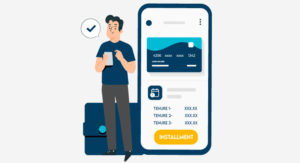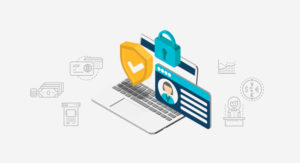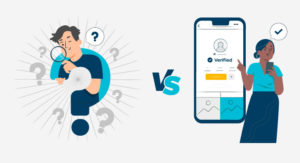How Identity Proofing Prevents Fraud?

Building trust online requires proof in today’s time. After the pandemic, it has become harder for businesses operating in the growing digital world needs to ensure that a customer is a real person. This is also known as “identity verification or Know your Customer” for businesses in regulated industries.
There are several technologies that involve verifying name, date of birth and address information to reputable data sources such as credit references. But, all of these steps are worthless if identity proofing is not done beforehand.
What is Identity Proofing?
Identity proofing is the process of making sure that the person who’s signing up is actually real. This is one of the most important parts of an identity verification journey. If a business is unable to verify the identity of a customer, any verification step afterward is in vain.
Not having a proper due diligence process for vetting your customers can lead to financial and reputational losses.
Document Verification in Identity Proofing
During physical customer onboarding, businesses can rely on physical identity data to verify if a customer is real or not. In physical settings, companies can check for ID documents.
After Covid, we’ve moved to a digital onboarding process. Businesses have to go through a digital identity verification process. So, what is the approach businesses can take to verify the identities of customers?
Knowledge-Based Authentication
A lot of new technologies have come to the market to accommodate this. Knowledge-based authentication questions are one method of identity proofing. KBA is a set of questions that only a real person would know. Common questions include:
- Amount of money spent on mortgage
- Color of the first car
- Name of the first pet
- Your favorite teacher
There are legitimate questions, but a spouse can also answer them. Bad actors try to guess answers to these questions. In case there has been a major data breach, fraudsters tend to use this data to answer questions. But knowledge-based questions aren’t really a secure method of identity proofing.
Businesses need to use solutions that replicate face-to-face interactions. There need to be solutions that can be legitimate, and secure.
Step-by-Step Process to Digital Identity Proofing
1. Document Verification
To verify identity, a customer is asked to provide copies of their government-issued ID documents. Robust document verification solutions such as DIRO can verify the legitimacy of the document by cross-referencing information from the issuing sources.
2. Face Match
In the next step, businesses need to verify that the person presenting the documents is legit. The right way to do this is to match the face on the document with the person who presented the document.
Some companies ask the customer to verify themselves by submitting a selfie. Face-matching is an important part of identity proofing.
3. Liveness Check
The problem with face match is that a fraudster can submit the selfie of the original person that they can download online. So Liveness check is crucial to make sure it’s a legit person submitting the application, not a fake person.
Liveness check is the process where a person has to record a video and say a code in the video. This prevents the use of any impersonation tools or the use of fake photos.
4. Digital Identity Data Layering
All the Identity verification experts that no one size fits all digital ID proofing works for all businesses. With any system, there are outliers and exceptions. Having a multi-layered approach to digital identity verification is wise.
Relying on trusted third-party data is a crucial part of the identity-proofing process. Taking a data-centric approach to ID verification makes it easier for businesses.
5. Secure and Smooth Customer Experience
A great customer onboarding experience is crucial for both businesses and customers. Customers who have a poor onboarding experience tend to never use the services.
For businesses to scale up, you need to provide a secure yet smooth customer onboarding experience. Fraudsters, tend to find the path of least resistance, and by avoiding detection and prevention steps between bad actors.












